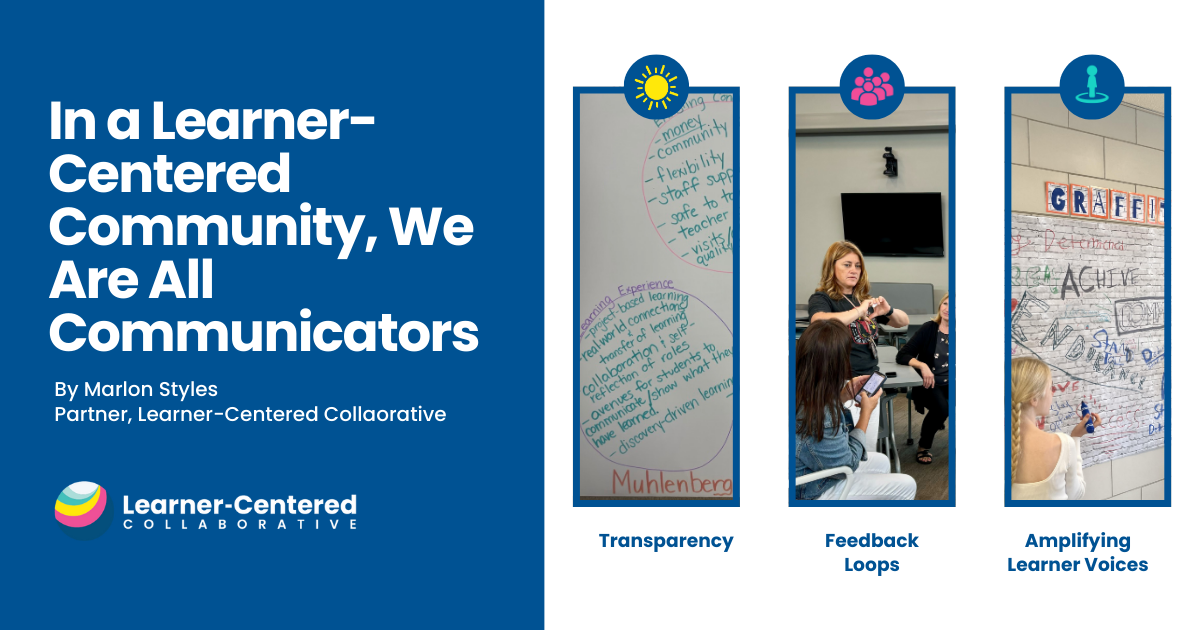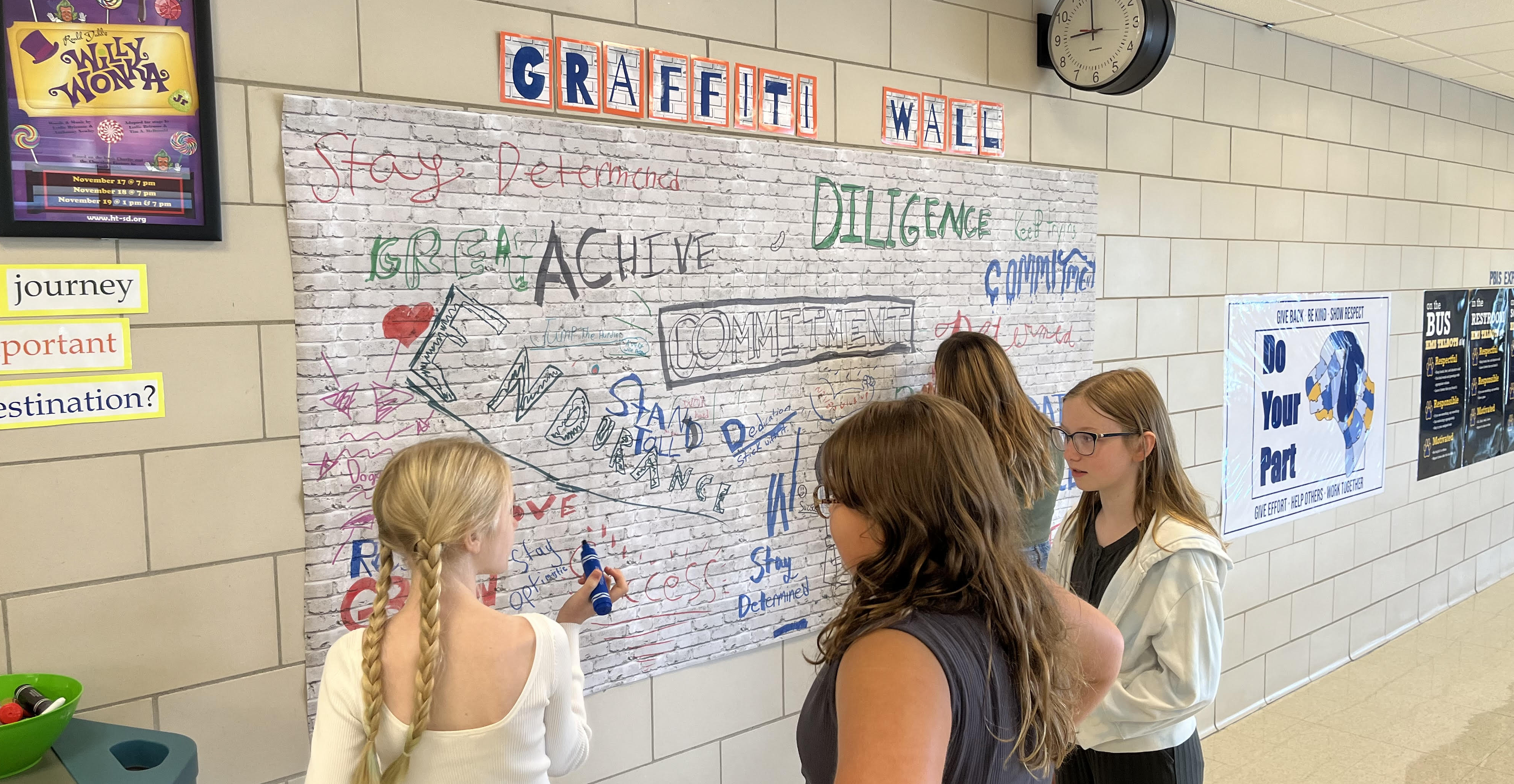In a Learner-Centered Community, We Are All Communicators

Creating a learner-centered community requires clear, transparent communication that puts students at the center. Through transparency, feedback loops, and storytelling, we can amplify student voice and build shared vision. Through Muhlenberg’s digital spaces, Mentor’s Guiding Coalition meetings, and Hampton’s multimedia storytelling, we see how intentional communication creates environments where everyone—learners, educators, administrators, and families—contributes to student success.
When communication is thoughtful and ongoing, it creates opportunities for meaningful dialogue about schools’ goals and aspirations. Whether through interactive websites, student-led meetings, or community videos, these channels help learners invest in their growth and educators innovate in service of learning. Let’s explore how three districts leverage different approaches to make every voice matter.
Transparency: The Foundation of Trust

Transparency is a cornerstone of effective communication in learner-centered communities. Muhlenberg County Public Schools exemplifies this through their comprehensive website, where they make their Learner Profile progressions and celebrations of learning visible and interactive. This transparency invites ongoing feedback and engagement from their entire community.
Through their online platform, Muhlenberg documents both the process and outcomes of learning, creating natural opportunities for stakeholder input. By publicly sharing their learner profile progressions, they make their vision concrete and invite community dialogue about student growth.
When schools are transparent about their vision and implementation, they build trust and invite collaboration. Transparency isn’t just about sharing successes; it’s about acknowledging areas for growth. When schools openly discuss challenges, they invite community problem-solving and create collective responsibility for learner success.
Visit Muhlenberg’s website here to see how they make learning visible and accessible to all.
Creating Feedback Loops: Listening to the Community

In a truly learner-centered community, communication is a two-way street. At Mentor Public Schools, students don’t just participate —they actively drive district movement. “Being on the plan means that I get to have a voice with these adults and actually voice what us as students need,” shares one student leader in Mentor’s Guiding Coalition video.
While student voice can take many forms, from surveys to student-led conferences, Mentor’s Guiding Coalition demonstrates what happens when students help shape strategic direction. They work alongside community members, parents, administrators, and board members to design their district’s future. As one student reflects, “The adults in this room really care. They understand that we’re going to be the future of this society and this community.”
Feedback loops empower students to take ownership of their learning journey. When they see that their voices are heard and that their feedback leads to changes, they become more engaged and motivated. This is a critical part of building a community where learners feel valued and seen as partners in the educational process.
Watch Mentor’s full video to see how structured feedback creates meaningful dialogue.
Amplifying Learner Voices: Centering Student Experiences

At the heart of a learner-centered community is the commitment to amplify the voices of learners through meaningful opportunities for input and leadership. Hampton Township School District exemplifies this through their Portrait of a Talbot video, where they openly share their vision through the voices of students, educators, and community members. Their message centers on three clear pillars: learning, tradition, and community.
By making their vision visible, Hampton creates an understanding of how spaces and practices connect to real-world preparation. As one educator notes, “It’s not the space, it’s not the creative design, it’s what it’s accomplishing for students.” This helps stakeholders see how changes in learning environments mirror workplace and college settings, making the purpose clear and meaningful.
When schools center student voices, they build trust and invite collaboration. As Hampton demonstrates, being open creates pride and ownership: “Our community should be proud that the district is taking on this initiative and being on that front cutting edge because this is where it’s going… This is where our students need to be ready and it doesn’t matter for whatever field they choose.”
Watch Hampton’s full video to see how student voice creates a culture where all learners are honored.
Storytelling: Celebrating Bright Spots and Inspiring Commitment
One of the most powerful tools for effective communication is storytelling. In a learner-centered community, storytelling becomes a way to celebrate the bright spots—those moments of achievement, innovation, and connection that remind us why we do what we do. These stories inspire the community to deepen their commitment to the shared vision and create a sense of pride and purpose.
Sharing stories of student success can take many forms, from highlighting an inspiring project in a school newsletter to featuring a student’s journey on social media. These stories help bring the vision of the school to life, making it tangible and relatable for everyone involved. They provide real examples of the impact that a learner-centered approach can have, showing how individual efforts contribute to a larger purpose.
When we share these bright spots, we also create a sense of hope and possibility. It reminds everyone in the community that even small successes are worth celebrating and that every step forward is a step toward achieving our goals. Storytelling, in this way, becomes a form of leadership, guiding the community toward a future where every learner is seen, heard, and valued.
Learn more about effective storytelling strategies in our blog “12 Ways to Breathe Life into Your Portrait of a Learner” and our webinar “The Power of Storytelling in Building Engaged Learning Communities.”






